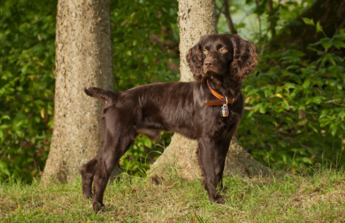There are several theories regarding the origin of the Clumber Spaniel. One states that it was developed in France by the French Duc de Noailles. Threatened by revolution, he transferred his dogs to the Duke of Newcastle, his close friend in England. The Duke's estate, Clumber Park, undoubtedly was the source of the breed’s name. Some believe that crosses with the heavy Alpine Spaniel andBasset Houndhelped produce this breed. Due to his heavy build, he is slower at his work of upland hunting than his lighter-boned spaniel cousins.
Clumbers were on the scene for the very first British dog shows, held in the mid-1800s. They were introduced to America, by way of Canada, around the same time. Careful studbooks were kept on the breed in America even before the AKC was established, and the Clumber was among the AKC’s 10 charter breeds when the organization was founded in 1884.










